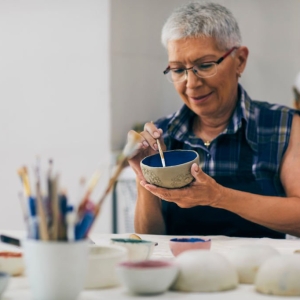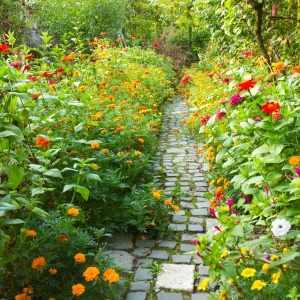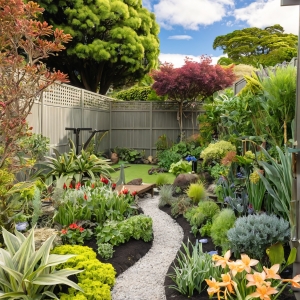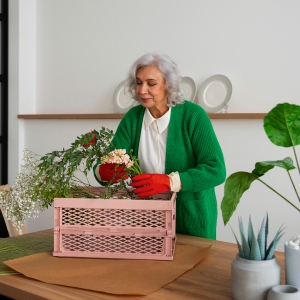Retirement Village living may have meant moving out of a family home which included a lovingly tended garden area. However! Your houseplants can come with, and now you are left with a variety of houseplants and you want to keep them alive, and looking gorgeous! Maybe even add to the selection to fit your new surroundings. In order to avoid feeling like the grim reaper of plant care, start by choosing the right plant for your environment. There are a selection of sensible, hardy indoor plants for New Zealand homes that are easy to care for, and can tolerate a range of conditions:
- Snake Plant (Sansevieria Trifasciata) - This is a popular choice for a reason. It's nearly indestructible, tolerates low light and infrequent watering.
- ZZ Plant (Zamioculcas Zamiifolia) - Nicknamed the "eternity plant" because of its reputation for thriving on neglect. It does well in bright indirect light or low light and infrequent watering.
- Spider Plant (Chlorophytum Comosum) - This easy-to-grow plant produces baby spiderettes that can be propagated into new plants. It does well in medium to bright indirect light and prefers evenly moist soil.
- Peace Lily (Spathiphyllum Wallisii) - This elegant plant is known for its air-purifying properties. It prefers medium to low light and moist soil, and will let you know it's thirsty by drooping its leaves.
- Devil's Ivy (Epipremnum Aureum) - Also known as Pothos, this fast-growing vine is perfect for hanging baskets or letting it climb a moss pole. It tolerates a wide range of light conditions (except direct sunlight) and watering needs.
- Cast Iron Plant (Aspidistra Elatior) - This shade-loving plant is known for its dark green, cast-iron-like leaves. It's very forgiving of neglect and can even tolerate periods of drought.
- Ponytail Palm (Beaucarnea Recurvata) - This unique-looking succulent stores water in its bulbous base, so it doesn't need to be watered frequently. It prefers bright, indirect sunlight and well-draining soil.
- Rubber Plant (Ficus Elastica) - This popular plant has large, glossy leaves that come in a variety of colors. It prefers bright, indirect light and consistent watering.
Light
Once you’ve decided on what would be a beautiful fit for your home, it’s time to focus on how to keep them healthy. To make sure your plant thrives, think about the amount of light it is getting. Generally speaking, the more light you plants get, the better, however different plants have different light needs - some bright, others indirect sun or low light. Plan to match the available space you have to the best plant choice for the light conditions in that area. To ensure you don’t get lopsided growth, it’s a good idea to rotate your plants as they tend to grow towards their light source.
Watering
The first rule here is to observe. Look over your plants every couple of weeks and check for issues. In an effort to encourage healthy growth, people commonly make the mistake of overwatering. This can lead to root rot and eventually lead to a dead plant, rather than a flourishing one! Just as you would check the temperature of a baby’s bath water, remember to check the soil moisture before watering by simply popping a finger into the soil. Quite simply, if it feels dry, it’s time to water. To ensure all the roots get the moisture they need when you do water, soak the soil completely until the water runs out of the drainage holes. To help you remember when you last watered or checked your plants, mark it on your calendar.
Potting:
This one is simple. Use the right sized pot! One that’s too big can lead to overwatering, too small and you’ll restrict root growth. It’s like buying your kid a winter coat - get one that’s slightly larger than the plant currently needs to allow for a bit of growth. Use a well-draining soil to prevent waterlogging - keep an eye out for a potting mix specifically formulated for indoor plants.
Fertilising:
During the growing season (usually spring and summer), fertilise your plants according to the package instructions. You’ll find most houseplants don't need fertiliser in the winter months but you could give them a boost pre-winter and a little top up in spring.
A few other things to keep in mind:
- Humidity: Some plants prefer higher humidity levels. You can increase humidity by grouping plants together, placing them on a pebble tray filled with water, or using a humidifier.
- Grooming: Every so often spray a mist of tepid water over the leaves and genly wipe with a soft cloth. You could put the plant out in gentle rain or hose them off gently, alternatively an easy option is to place it in the shower then allow to dry.
- Tidy up plants by deadheading flowers that have done their dash. Prune the plants that are losing shape which will keep it more balanced with strong growth.
- Pest control: Keep an eye out for common houseplant pests like mealybugs or spider mites. Treat them promptly with an insecticidal soap or neem oil solution.
With a bit of TLC, you’ll have a blooming array of indoor plants in no time. And if you’re having some trouble, no one’s going to judge a dirty little habit of popping some fake pot plants amongst the real one’s to bolster the collection!





















